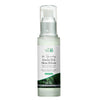Why Does Dandruff Occur in Winter? Understanding the Causes

Understanding Why Dandruff Happens in Winter
To truly grasp why dandruff happens, especially in the colder months, it's essential to consider the unique conditions winter brings. Drier air, reduced sunlight exposure, and frequent use of indoor heating can all dehydrate the scalp, creating an ideal environment for dandruff to develop. These factors disrupt the natural balance of oils on the scalp, leading to flaking and irritation. By understanding these triggers, we can better address the root causes of dandruff and implement effective strategies to maintain a healthy, flake-free scalp throughout the winter season.
The Winter Dandruff Phenomenon
Dandruff is a condition characterized by the flaking of the scalp, which can be accompanied by itchiness and irritation. Though dandruff can occur year-round, many people find their symptoms worsen during the winter. Various elements play a role in the increased prevalence of dandruff during this season:
- Dry Air: Winter air is typically drier than air in other seasons, which can strip moisture from the scalp and cause dehydration. This lack of hydration weakens the scalp's natural barrier, leading to flakiness, irritation, and increased dandruff formation during winter.
- Reduced Sunlight: Sunlight plays a role in controlling dandruff by managing the growth of yeast responsible for flakes. However, shorter winter days and less sunlight exposure reduce this natural regulation, creating an environment where yeast can thrive and exacerbate dandruff.
- Indoor Heating: The use of indoor heating during winter to combat the cold often results in hot, dry air. This dryness impacts not just the skin but also the scalp, making it prone to irritation and flaking, ultimately worsening dandruff symptoms.
- Less Frequent Shampooing: In winter, many people wash their hair less frequently due to the chilly weather. This allows oils, sweat, and dead skin cells to accumulate on the scalp, creating the perfect conditions for dandruff to flourish and cause discomfort.
Managing Dandruff in Winter

Understanding the causes is the first step to controlling dandruff in winter. Here are some effective strategies:
- Moisturize Your Scalp: Just as you moisturize your skin, consider applying a hydrating treatment to your scalp. Look for products specifically designed to combat dandruff and contain ingredients like tea tree oil, coconut oil, or Shea butter.
- Sunlight Exposure: Whenever possible, try to expose your scalp to natural sunlight, as it helps manage the yeast that contributes to dandruff. Taking a brief walk during the sunniest part of the day can significantly improve scalp health and reduce flakes.
- Choose the Right Shampoo: Using an anti-dandruff shampoo is crucial during these months. Ingredients like Ketoconazole, Panthenol, Salicylic Acid or Zinc Pyrithione can help manage the yeast responsible for dandruff.
- Humidify Your Indoor Environment: Using a humidifier is an excellent way to restore moisture to the air in your home during winter. By maintaining optimal humidity levels, it prevents your scalp from drying out and helps reduce dandruff symptoms effectively.
Combat Winter Dandruff with The Beauty Sailor Dandruff Control Shampoo
For those struggling with winter dandruff, incorporating The Beauty Sailor Dandruff Control Shampoo into your hair care routine can be a game changer. Specifically formulated to target the root causes of dandruff, this shampoo combines nourishing ingredients with effective anti-dandruff agents. Regular use not only reduces flakes but also soothes and moisturizes the scalp, ensuring your hair remains healthy and resilient against the harsh winter conditions. Give your scalp the care it deserves with The Beauty Sailor.
Conclusion
Dandruff in winter is a manageable condition once you understand the underlying causes. By adjusting your hair care routine and taking proactive steps to introduce moisture and manage yeast production, you can significantly reduce the presence of dandruff. Remember, every scalp is different, so it might take some time to find the right combination of treatments that work for you. Stay consistent with your routine, and you should see improvement throughout the winter season.












